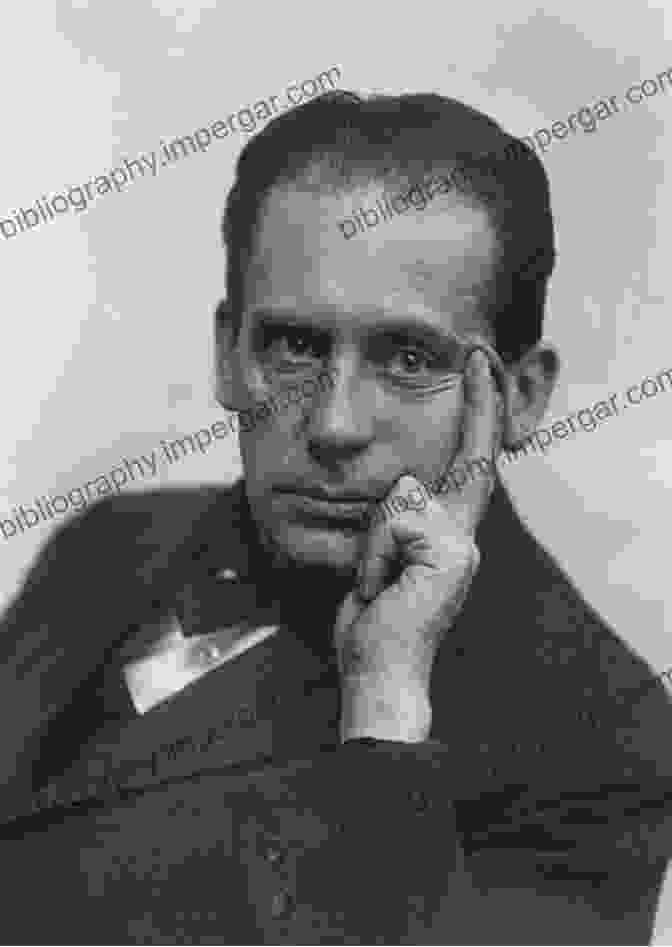Gropius: The Man Who Built the Bauhaus and Shaped Modern Architecture

The Early Years

4.4 out of 5
| Language | : | English |
| File size | : | 32157 KB |
| Text-to-Speech | : | Enabled |
| Screen Reader | : | Supported |
| Enhanced typesetting | : | Enabled |
| Word Wise | : | Enabled |
| Print length | : | 560 pages |
Walter Gropius was born in Berlin, Germany, in 1883. His father was a successful architect, and Gropius followed in his footsteps, studying architecture at the Technical University of Munich and the Technical University of Berlin. After graduating, Gropius worked for several architectural firms in Berlin and Vienna, gaining valuable experience in the field.
Founding the Bauhaus
In 1919, Gropius was appointed director of the Staatliches Bauhaus in Weimar, Germany. The Bauhaus was a revolutionary new school of art, design, and architecture. Gropius believed that art and technology should be combined to create functional and beautiful objects. He also emphasized the importance of teamwork and collaboration in the design process.

Under Gropius's leadership, the Bauhaus quickly became one of the most important centers of modern art and design. The school attracted some of the most talented artists and designers of the early 20th century, including Wassily Kandinsky, Paul Klee, and Ludwig Mies van der Rohe. The Bauhaus also produced some of the most iconic works of modern architecture, including the Bauhaus building in Weimar and the Dessau Bauhaus.
The Bauhaus Principles
Gropius developed a set of principles for the Bauhaus that would influence the school's teaching and design philosophy. These principles included:
* Form follows function. * Use of simple, geometric shapes. * Emphasis on mass production. * Elimination of ornamentation. * Importance of teamwork and collaboration.
These principles would go on to have a profound impact on the development of modern architecture and design.
The Bauhaus Years
The Bauhaus years were a time of great creativity and innovation for Gropius and the school. The school developed a new approach to architecture that emphasized simplicity, functionality, and the use of new materials and technologies. The Bauhaus also produced some of the most iconic designs of the 20th century, including the Wassily Chair by Marcel Breuer, the Bauhaus Lamp by Wilhelm Wagenfeld, and the Barcelona Pavilion by Mies van der Rohe.

Later Years
In 1933, the Bauhaus was closed by the Nazi government. Gropius left Germany and moved to England, where he taught at the Architectural Association School of Architecture. In 1937, he moved to the United States, where he taught at Harvard University's Graduate School of Design.
Gropius continued to be active in the field of architecture until his death in 1969. He designed some of the most important buildings of the mid-20th century, including the Graduate Center at Harvard University, the Pan Am Building in New York City, and the United States Embassy in Athens, Greece.
Legacy
Walter Gropius is considered one of the most important architects of the 20th century. His work had a profound impact on the development of modern architecture and design, and his principles continue to be followed by architects and designers today. The Bauhaus, which he founded, remains one of the most influential art schools in the world.
If you are interested in learning more about Walter Gropius and the Bauhaus, I highly recommend reading the book "Gropius: The Man Who Built the Bauhaus" by Fiona MacCarthy. This book provides a comprehensive overview of Gropius's life and work, and it is a great resource for anyone who wants to learn more about the history of modern architecture.
4.4 out of 5
| Language | : | English |
| File size | : | 32157 KB |
| Text-to-Speech | : | Enabled |
| Screen Reader | : | Supported |
| Enhanced typesetting | : | Enabled |
| Word Wise | : | Enabled |
| Print length | : | 560 pages |
Do you want to contribute by writing guest posts on this blog?
Please contact us and send us a resume of previous articles that you have written.
 Book
Book Novel
Novel Page
Page Chapter
Chapter Text
Text Story
Story Genre
Genre Reader
Reader Library
Library Paperback
Paperback E-book
E-book Magazine
Magazine Newspaper
Newspaper Paragraph
Paragraph Sentence
Sentence Bookmark
Bookmark Shelf
Shelf Glossary
Glossary Bibliography
Bibliography Foreword
Foreword Preface
Preface Synopsis
Synopsis Annotation
Annotation Footnote
Footnote Manuscript
Manuscript Scroll
Scroll Codex
Codex Tome
Tome Bestseller
Bestseller Classics
Classics Library card
Library card Narrative
Narrative Biography
Biography Autobiography
Autobiography Memoir
Memoir Reference
Reference Encyclopedia
Encyclopedia G William Domhoff
G William Domhoff Floyd M Orr
Floyd M Orr George Cary Eggleston
George Cary Eggleston Francis Emery
Francis Emery Fiona Ballard
Fiona Ballard Fraser J Harbutt
Fraser J Harbutt Valerie Menard
Valerie Menard Michael J Reilly
Michael J Reilly Stikeo
Stikeo Frank L Maraist
Frank L Maraist Josiah Quincy
Josiah Quincy Walter Greiner
Walter Greiner Jana Marx
Jana Marx Fred Van Lente
Fred Van Lente Gabrielle Baiverlin
Gabrielle Baiverlin Evgeny Yantovsky
Evgeny Yantovsky Eugene Jarecki
Eugene Jarecki Gabriella Giannachi
Gabriella Giannachi Gambero Rosso
Gambero Rosso Fredrik Praesto
Fredrik Praesto
Light bulbAdvertise smarter! Our strategic ad space ensures maximum exposure. Reserve your spot today!

 Ian McEwanUnveiling the Depths of Autism Spectrum Disorder: A Clinician's Comprehensive...
Ian McEwanUnveiling the Depths of Autism Spectrum Disorder: A Clinician's Comprehensive... Matt ReedFollow ·2.1k
Matt ReedFollow ·2.1k David BaldacciFollow ·11.6k
David BaldacciFollow ·11.6k Troy SimmonsFollow ·16.5k
Troy SimmonsFollow ·16.5k Chance FosterFollow ·2.8k
Chance FosterFollow ·2.8k Jackson BlairFollow ·17.1k
Jackson BlairFollow ·17.1k Franklin BellFollow ·5.4k
Franklin BellFollow ·5.4k Jace MitchellFollow ·3.1k
Jace MitchellFollow ·3.1k W. Somerset MaughamFollow ·4.9k
W. Somerset MaughamFollow ·4.9k

 Alexander Blair
Alexander BlairBecoming Sports Agent Masters At Work: The Ultimate Guide
What is a Sports...

 Xavier Bell
Xavier BellUnveiling the Enchanting World of Upper Bohemia: A Review...
A Captivating...

 Chris Coleman
Chris ColemanUnveiling the Secrets: Extreme Rapid Weight Loss Hypnosis...
In the relentless pursuit of a slimmer,...
4.4 out of 5
| Language | : | English |
| File size | : | 32157 KB |
| Text-to-Speech | : | Enabled |
| Screen Reader | : | Supported |
| Enhanced typesetting | : | Enabled |
| Word Wise | : | Enabled |
| Print length | : | 560 pages |
















